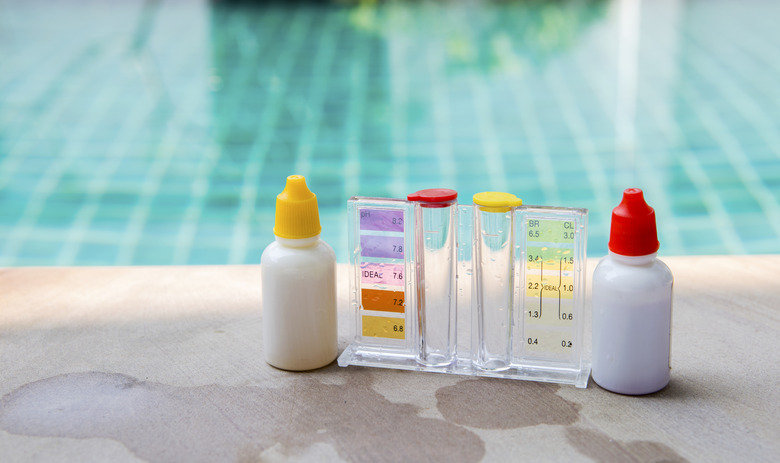What Happens When You Mix Pool Chlorine & Break Fluid?
It is hard to imagine a chemical reaction more thrilling than spontaneous combustion. One example of this phenomenon occurs when two common chemicals come together: swimming pool chlorine and brake fluid.
Warning
Mixing swimming pool chlorine with brake fluid produces a fireball that may shatter glass. This process is extremely dangerous. You should never attempt this experiment at home.
TL;DR (Too Long; Didn't Read)
Combining swimming pool chlorine with brake fluid creates an improvised explosive characterized by a 5-second to 30-second period of dormancy followed by a hiss and a fireball. Only conduct this experiment in a laboratory with a fume hood and safety gear while under the supervision of an expert.
Pool Chlorine and Brake Fluid Reaction
Pool Chlorine and Brake Fluid Reaction
Swimming pool chlorine and brake fluid are household chemicals that are often found in a garage or shed. When you combine these chemicals, you create an improvised explosive consisting of an oxidizing agent – calcium hypochlorite, which is swimming pool chlorine – and a fuel source, polyethylene glycol-based brake fluid. When the fuel rapidly oxidizes in the presence of the oxidizing agent, the mixture spontaneously combusts, resulting in a fireball.
The Experimental Procedure
The Experimental Procedure
Because this experiment involves mixing volatile compounds and produces a fireball, it is dangerous. The only safe way to conduct this experiment is to use very small quantities of the ingredients in a laboratory with a fume hood while under the supervision of an expert. Anyone present during the experiment should wear a face shield.
Place 2 to 2.5 grams of swimming pool chlorine, in an open evaporating dish under a fume hood. Pipette 1 milliliter of brake fluid into the evaporating dish. Step away from the fume hood to observe the experiment from a safe distance.
What to Expect
What to Expect
After combining the ingredients, you should expect a short period of dormancy. Nothing will happen for between 5 and 30 seconds, depending on the freshness of the swimming pool chlorine. It is important not to approach the fume hood during this time even if you suspect the experiment did not work.
You should hear a hiss in the evaporating dish followed by a fireball within a second of the sound. This fireball should flare and die quickly and is likely to shatter the evaporating dish.
Mixing swimming pool chlorine with brake fluid is an exciting experiment that displays the power of oxidation. When performed under safe circumstances, it is a thrilling introduction to combustion in the chemistry laboratory.
Cite This Article
MLA
Mayer, Melissa. "What Happens When You Mix Pool Chlorine & Break Fluid?" sciencing.com, https://www.sciencing.com/happens-pool-chlorine-break-fluid-5183586/. 10 May 2018.
APA
Mayer, Melissa. (2018, May 10). What Happens When You Mix Pool Chlorine & Break Fluid?. sciencing.com. Retrieved from https://www.sciencing.com/happens-pool-chlorine-break-fluid-5183586/
Chicago
Mayer, Melissa. What Happens When You Mix Pool Chlorine & Break Fluid? last modified August 30, 2022. https://www.sciencing.com/happens-pool-chlorine-break-fluid-5183586/
